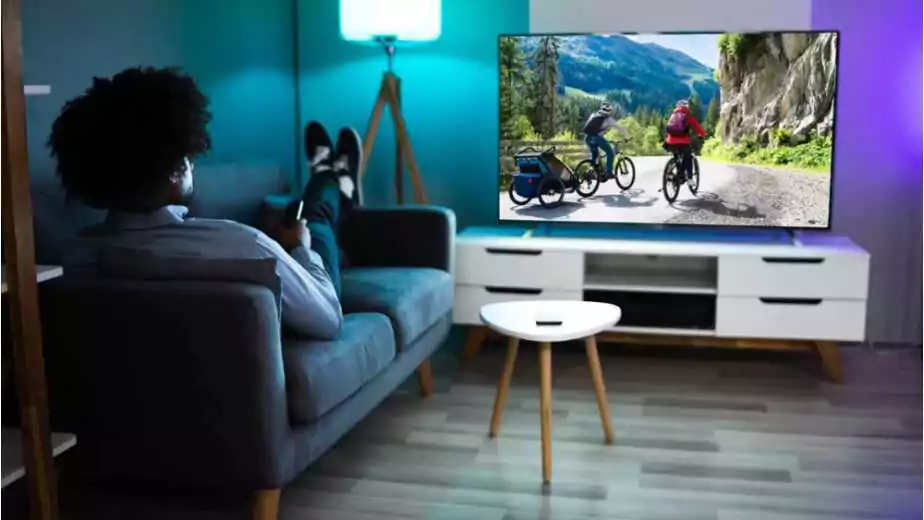What is the Average LED TV Lifespan? Factors & More

The world of technology is constantly evolving, and LED TVs have become increasingly popular in recent years. They offer excellent picture quality, energy efficiency, and sleek designs, making them a top choice for many households. A common question that arises when purchasing a new television is, “What is the lifespan of an LED TV?” In this comprehensive blog post, we will explore the LED TV lifespan in-depth and understand the factors that contribute to the LED TV lifespan.
1 Understanding LED TVs
Before diving into the lifespan of an LED TV, it’s essential to understand what an LED TV is and how it differs from other types of television. LED TVs are a type of LCD (liquid crystal display) TV that use light-emitting diodes (LEDs) as a backlight instead of traditional cold cathode fluorescent lights (CCFLs). LED TVs come in two main types: edge-lit and full-array. Edge-lit models have LEDs positioned around the edges of the screen, while full-array models have LEDs distributed across the entire back panel. This difference in LED placement can impact the overall picture quality and the LED TV lifespan.
2 LED TV Lifespan: The Basics
The life of an LED TV is often measured in hours of usage, with the industry standard being 100,000 hours. This equates to approximately 11 years of continuous use, 24 hours a day, 7 days a week. However, in a more realistic scenario, if a household watches TV for an average of 4-6 hours per day, the LED TV lifespan would be between 45 and 68 years. It’s important to note that this is a general guideline, and the actual lifespan of an LED TV may vary based on factors such as brand, model, usage patterns, and environmental conditions.
3 Factors Affecting the Life of LED TV
Brand and Model
The quality of an LED TV’s components and design can significantly impact its lifespan. Top-tier brands typically invest more in research and development, leading to better-quality components and longer-lasting televisions. It’s essential to research and read reviews on various LED TV brands and models to get a better understanding of their expected lifespans.
Usage Patterns
The amount of time an LED TV is used daily can influence the life of LED TV. Constantly running an LED TV for extended periods may cause the components to degrade faster, shortening the overall life of the LED TV. Turning off the TV when not in use and minimising marathon TV sessions can help prolong the LED TV lifespan.
Brightness and Contrast Settings
LED TVs use backlighting to create the bright, vivid images we enjoy. However, using higher brightness and contrast settings can cause the LEDs to work harder, generating more heat and potentially reducing the LED TV lifespan. Adjusting these settings to a more moderate level can help preserve the life of an LED TV.
Temperature and Humidity
Environmental factors such as temperature and humidity can also affect the LED TV lifespan. High temperatures can cause the TV’s components to wear down more quickly, while high humidity can lead to condensation and potential damage to internal parts. To prolong the life of an LED TV, it’s important to maintain a comfortable room temperature and avoid placing the TV in areas with high humidity or direct sunlight.
Dust and Ventilation
Dust can accumulate on the TV’s vents and internal components, potentially causing the TV to overheat and shortening the LED TV lifespan. Regularly dusting the TV and ensuring proper ventilation can help maintain its performance and longevity.
Power Surges
Power surges can cause damage to an LED TV’s internal components, potentially reducing the life of LED TV. Investing in a surge protector can help safeguard the TV from electrical fluctuations and extend its life.
4 Signs of an Aging LED TV
As an LED TV age, certain signs may indicate that its lifespan is nearing its end. Some common symptoms include:
Dimming Picture: Over time, the LEDs in an LED TV may lose their brightness, resulting in a dimmer picture. If the brightness setting is already at its maximum and the picture still appears dim, it may be a sign that the LED TV lifespan is nearing its end.
Discolouration: Discoloration, also known as “burn-in,” can occur when static images are displayed on an LED TV for extended periods. This can cause the pixels to wear unevenly, leading to colour distortion or ghosting. Although less common in LED TVs compared to other display types, it may still indicate an ageing TV.
Flickering or Flashing: If an LED TV starts flickering or flashing, it may be a sign of a failing backlight or a problem with the power supply. These issues can reduce the LED TV lifespan and may require repair or replacement.
Dead Pixels: Dead pixels are small, unlit spots on the screen that can occur as LED TV ages. While a few dead pixels may not be a cause for concern, an increasing number of dead pixels may indicate that the life of the LED TV is coming to an end.
5 Tips for Extending the LED TV Lifespan
To get the most out of your LED TV and prolong its life, follow these tips:
Adjust Brightness and Contrast Settings: As mentioned earlier, using moderate brightness and contrast settings can help reduce strain on the LEDs and extend the LED TV lifespan.
Provide Adequate Ventilation: Ensure that the TV has sufficient space around it for proper ventilation. Avoid placing it in enclosed cabinets or near heat sources.
Dust Regularly: Keep the TV clean by dusting it regularly, paying special attention to the vents and any openings where dust could accumulate.
Use a Surge Protector: Protect your LED TV from power surges by plugging it into a surge protector.
Turn Off the TV When Not in Use: Minimize the time your LED TV is on by turning it off when it’s not in use.
6 Wrapping Up
The life of LED TV can vary depending on numerous factors, including brand, model, usage patterns, and environmental conditions. While the industry standard suggests a 100,000-hour lifespan, the actual life of an LED TV may be longer or shorter based on these factors. By understanding the factors that influence the LED TV lifespan and taking steps to maintain the TV properly, you can help ensure a long and enjoyable life for your LED TV.
Community Q&A
About This Article
This article has been viewed 897 times.



